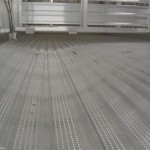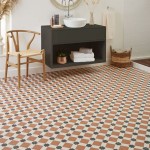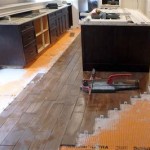Is Vinyl Plank Flooring Safe to Use? A Comprehensive Overview
Vinyl plank flooring has surged in popularity as a versatile and cost-effective alternative to traditional hardwood, tile, and laminate options. Its durability, water resistance, ease of installation, and aesthetic appeal make it an attractive choice for homeowners and property managers alike. However, alongside its advantages, concerns about the safety of vinyl plank flooring have also arisen, particularly regarding the potential for chemical emissions and their impact on indoor air quality and human health. This article aims to provide a comprehensive overview of the safety considerations associated with vinyl plank flooring, examining the materials used in its construction, potential sources of concern, testing and certification standards, and practical measures to mitigate risks.
Vinyl plank flooring, at its core, is a synthetic flooring material composed primarily of polyvinyl chloride (PVC) resin. Depending on the specific product and manufacturer, various additives, stabilizers, plasticizers, and colorants are incorporated into the PVC formulation to achieve desired performance characteristics, such as flexibility, durability, and aesthetic appearance. The typical layered structure of a vinyl plank floor includes a wear layer, a decorative layer, and a core layer, often reinforced with fiberglass for added stability. The wear layer, usually made of polyurethane or a similar protective coating, is designed to resist scratches, scuffs, and stains, extending the floor's lifespan. The decorative layer provides the visual appeal, often mimicking the look of wood, stone, or tile with high-resolution printed images. The core layer provides the structural integrity and dimensional stability of the plank.
The safety concerns surrounding vinyl plank flooring primarily stem from the potential for volatile organic compound (VOC) emissions and the presence of certain chemicals of concern in its composition. VOCs are organic chemicals that evaporate at room temperature and can contribute to indoor air pollution. Some VOCs, like formaldehyde, benzene, and toluene, are known to be harmful to human health, causing respiratory irritation, headaches, and even long-term health problems with prolonged exposure. Phthalates, a group of chemicals commonly used as plasticizers to enhance the flexibility and durability of PVC, have also raised concerns due to their potential endocrine-disrupting effects. Furthermore, the manufacturing processes involved in producing vinyl plank flooring can sometimes involve the use of heavy metals and other hazardous substances that may pose environmental and health risks if not properly managed.
Understanding Potential Sources of Chemical Emissions
The chemical composition of vinyl plank flooring is complex and can vary significantly depending on the manufacturer, product line, and formulation. The potential sources of chemical emissions from vinyl plank flooring can be categorized as follows:
1. Volatile Organic Compounds (VOCs): VOCs are released from various components of vinyl plank flooring, including the PVC resin itself, plasticizers, adhesives, and coatings. The type and concentration of VOCs emitted can vary depending on the specific chemicals used in the manufacturing process and the age of the flooring. New vinyl plank flooring can exhibit higher VOC emissions, which typically decrease over time as the chemicals dissipate. However, some VOCs may persist for extended periods, particularly in poorly ventilated environments. Formaldehyde, a known carcinogen, is a common VOC of concern in building materials, including some vinyl plank flooring products. Other VOCs, such as benzene, toluene, ethylbenzene, and xylene (collectively known as BTEX compounds), may also be present.
2. Phthalates: Phthalates are a group of chemicals widely used as plasticizers to make PVC more flexible and durable. Some phthalates, such as di(2-ethylhexyl) phthalate (DEHP), dibutyl phthalate (DBP), and benzyl butyl phthalate (BBP), have been identified as endocrine disruptors and linked to adverse health effects, including reproductive and developmental problems. While the use of certain phthalates has been restricted in some applications, they may still be present in some vinyl plank flooring products, particularly older or less stringently regulated options. The potential for phthalate exposure is primarily through inhalation of airborne particles or direct contact with the flooring material.
3. Heavy Metals: Heavy metals, such as lead, cadmium, and mercury, may be used as pigments, stabilizers, or catalysts in the manufacturing of vinyl plank flooring. While the use of heavy metals has been reduced in many modern formulations, some older or lower-quality products may still contain detectable levels. Exposure to heavy metals can pose significant health risks, including neurological damage, kidney problems, and developmental issues. The primary concern with heavy metals in vinyl plank flooring is the potential for leaching into the environment or release as dust during installation or renovation.
Testing and Certification Standards for Vinyl Plank Flooring
To address the safety concerns associated with vinyl plank flooring, various testing and certification standards have been developed to evaluate the chemical emissions and material composition of these products. These standards provide a framework for manufacturers to demonstrate compliance with specific requirements and for consumers to make informed purchasing decisions. Some of the most relevant testing and certification standards for vinyl plank flooring include:
1. FloorScore Certification: FloorScore certification is a widely recognized and respected standard for indoor air quality. It is administered by the Resilient Floor Covering Institute (RFCI) and SCS Global Services, an independent third-party certification body. FloorScore certification ensures that vinyl plank flooring products meet stringent VOC emission limits established by the California Department of Public Health (CDPH) Standard Method v1.2, also known as Section 01350. Products that achieve FloorScore certification are considered low-emitting and safe for use in schools, offices, and other indoor environments.
2. GREENGUARD Certification: GREENGUARD certification, administered by UL Environment, is another well-established standard for indoor air quality. GREENGUARD certified products meet rigorous VOC emission limits and are tested for a wide range of chemical pollutants. GREENGUARD certification is available in various levels, including GREENGUARD Gold, which has even stricter emission requirements, particularly for sensitive environments like schools and healthcare facilities.
3. REACH Compliance: REACH (Registration, Evaluation, Authorisation and Restriction of Chemicals) is a European Union regulation that aims to protect human health and the environment from the risks posed by chemicals. REACH requires manufacturers to register chemicals used in their products and to provide information on their potential hazards. Some vinyl plank flooring products may be certified as REACH compliant, indicating that they meet the requirements of this regulation and do not contain substances of very high concern (SVHCs) above specified limits.
4. California Proposition 65: California Proposition 65, also known as the Safe Drinking Water and Toxic Enforcement Act, requires businesses to provide warnings about significant exposures to chemicals that cause cancer, birth defects, or other reproductive harm. Some vinyl plank flooring products may carry Proposition 65 warnings if they contain chemicals listed by the state of California as being potentially harmful. While a Proposition 65 warning does not necessarily mean that a product is unsafe, it does indicate the presence of a listed chemical and the potential for exposure.
Mitigating Risks and Ensuring Safe Use
Even with advancements in manufacturing processes and the availability of certified low-emitting products, it is essential to take proactive measures to mitigate potential risks and ensure the safe use of vinyl plank flooring. The following recommendations can help minimize exposure to VOCs and other chemicals of concern:
1. Choose Certified Low-Emitting Products: Prioritize vinyl plank flooring products that have been certified by reputable third-party organizations, such as FloorScore and GREENGUARD. These certifications provide assurance that the products have been tested and meet stringent VOC emission limits.
2. Ensure Proper Ventilation: During and after installation, ensure adequate ventilation to allow VOCs to dissipate. Open windows and doors, and use fans to circulate air. Consider using an air purifier with a HEPA filter and activated carbon filter to remove airborne particles and VOCs.
3. Follow Installation Instructions Carefully: Adhere to the manufacturer's installation instructions, including recommendations for adhesives and underlayments. Use low-VOC or zero-VOC adhesives to minimize potential emissions. Avoid using excessive adhesive, as this can increase VOC release.
4. Allow for Off-Gassing: Before installing vinyl plank flooring, consider allowing it to off-gas in a well-ventilated area for a few days. This can help reduce initial VOC emissions before the flooring is installed in the living space.
5. Regular Cleaning and Maintenance: Clean vinyl plank flooring regularly with mild, non-toxic cleaners. Avoid using harsh chemicals or abrasive cleaners, as these can damage the flooring and potentially release harmful substances. Use a damp mop or cloth to remove dust and dirt, and avoid excessive water exposure.
6. Consider Alternatives: If you are particularly sensitive to chemicals or concerned about indoor air quality, consider alternative flooring options, such as hardwood, tile, or linoleum. These materials may have lower VOC emissions and a more sustainable environmental profile.
7. Review Material Safety Data Sheets (MSDS): Obtain and review the Material Safety Data Sheet (MSDS) for the specific vinyl plank flooring product you are considering. The MSDS provides detailed information on the chemical composition, potential hazards, and safe handling procedures. This information can help you make an informed decision and take appropriate precautions.
8. Seek Professional Advice: If you have specific concerns about the safety of vinyl plank flooring or are unsure about which products to choose, consult with a qualified flooring professional or environmental consultant. They can provide expert advice and guidance based on your individual needs and circumstances.

How To Choose The Right Vinyl Plank Deerfoot Carpet Flooring

The Disadvantages Of Vinyl Plank Flooring A Guide Reallyfloors America S Est Hardwood

What I Ve Learned As An Inspector For Luxury Vinyl Flooring Wood Floor Business

The Dangers Of Luxury Vinyl Floors Lvt And How You Can Avoid Them Artisan Wood Llc

A Beginner S Guide To Installing Vinyl Plank Flooring Dumpsters Com

10 Beginner Mistakes Installing Vinyl Plank Flooring Fixthisbuildthat

Vinyl Floor Faq 20 Things You Should Know

Can You Use Vinyl Flooring In Your Garage

What Is Luxury Vinyl Plank Flooring America

The Dangers Of Luxury Vinyl Floors Lvt And How You Can Avoid Them Artisan Wood Llc
Related Posts








